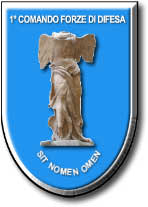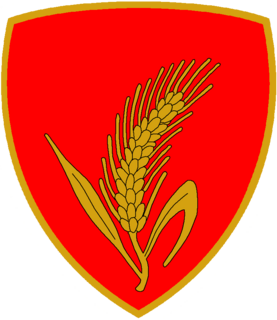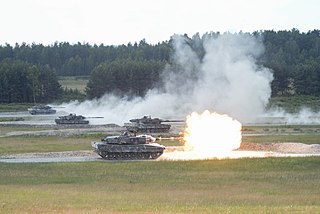
The Paratroopers Brigade "Folgore" is an airborne brigade of the Italian Army. Its core units are three battalions of paratroopers (paracadutisti). The name "Folgore" is Italian for lightning. The Folgore is one of three light infantry brigades of the Italian Army. While the Folgore specializes in parachute operations its sister brigade in the Division "Vittorio Veneto" the Airmobile Brigade Friuli specializes in helicopter assault operations. The Folgore and its units are based in Tuscany, Veneto and Lazio.
On March 1, 1984 the Italian Institute for Disarmament, Development and Peace (Istituto di ricerche per il disarmo, lo sviluppo e la pace in Rome published the entire Italian Army order of battle down to company level - this was justified for the radical party as one of its core demands was total disarmament of Europe, even though the data which was published was top secret. The Radical Party dissolved in 1989 and the IRDISP followed suit in 1990. But Radio Radicale has survived, and the OrBat can still be found today on the homepage of the radio.

The Pozzuolo del Friuli Cavalry Brigade is a brigade of the Italian Army, based in the Friuli Venezia Giulia and Veneto regions. The Brigade consists of a command unit, a cavalry regiment, an amphibious infantry regiment, an artillery regiment, an engineer regiment and a logistic regiment.

The Granatieri di Sardegna Mechanized Brigade is a mechanized infantry brigade of the Italian Army, based in Rome and central Italy. The brigade fields one of the oldest regiments of the Army and is one of the guard regiments of the Italian president. The name of the unit dates back to the Kingdom of Sardinia and not the eponymous Mediterranean island of Sardinia. The brigade is part of the Division "Acqui".

The Bersaglieri Brigade "Garibaldi" is a mechanized infantry brigade of the Italian Army, based in the south of the country. Its core units are Bersaglieri, an elite infantry corps of the Italian Army. The brigade is named after Giuseppe Garibaldi a hero of the Italian wars of unification. The brigade is part of the Division "Acqui".

The 131st Armoured Division Centauro was an armoured division of the Italian Army during World War II. It was formed in February 1939, by upgrading the 1st Armoured Brigade. It took part in operations in Albania, Greece and Yugoslavia before returning to Italy. Sent to North Africa in August 1942, it surrendered in Tunisia on 13 May 1943.

The Armored Brigade "Vittorio Veneto" was an armored brigade of the Italian Army. Its core units were armored and mechanized cavalry squadrons groups. The brigade's headquarters was in the city of Villa Opicina, with most of its units based in the Province of Trieste. The brigade's name was chosen to remember the decisive Italian World War I victory at the Battle of Vittorio Veneto.

The Mechanized Brigade "Gorizia" was a mechanized brigade of the Italian Army. Its core units were mechanized infantry battalions. The brigade's headquarters was in the city of Gorizia and the brigade's units were based in the region of Friuli-Venezia Giulia. The brigade's name was chosen in memory of the World War I Battle of Gorizia. The brigade's sister brigade the Armored Brigade "Vittorio Veneto" was named to commemorate the World War I Battle of Vittorio Veneto.

The Mechanized Brigade "Brescia" was a mechanized brigade of the Italian Army. Its core units were mechanized infantry battalions. The brigade was founded in, named after, and headquartered in the city of Brescia and accordingly the brigade's coat of arms was modeled after the city's coat of arms.

The 5th Army Corps was one of three corps the Italian Army fielded during the Cold War. Based in the regions of Veneto and Friuli-Venezia-Giulia the corps was the army's main combat force. The 5th Army Corps was arrayed close to the Yugoslavian border and tasked with meeting any Warsaw Pact forces that crossed the border. On the left flank of the corps the 4th Alpine Army Corps was tasked with blocking the Alpine passes and in the rear of the corps the 3rd Army Corps served as operational reserve. After the end of the Cold War the corps was reduced in size and on 1 October 1997 it became the 1st Defence Forces Command. In 2013 the COMFOD 1° was disbanded and its function and brigades taken over by the 20th Infantry Division Friuli in Florence.

The Mantova Mechanized Brigade was a mechanized brigade of the Italian Army. Its core units were mechanized infantry battalions. The brigade's headquarters was in the city of Cividale del Friuli. All the brigade's units were based in the region of Friuli-Venezia Giulia. In 2003, the Mantova was raised again as a division command.

The Mechanized Brigade "Legnano" was a mechanized brigade of the Italian Army. Its core units were mechanized infantry battalions. The brigade's headquarters was in the city of Bergamo in Lombardy. The name of the brigade commemorates the Lombard League victory in the Battle of Legnano in 1176 and its coat of arms depicts the Monument to the Warrior of Legnano in the centre of Legnano.

The Motorized Brigade "Cremona" was an infantry brigade of the Italian Army. The brigade's headquarters was in the city of Turin. The brigade carried on the name and traditions of the 44th Infantry Division "Cremona".

The Mechanized Brigade "Trieste" was a mechanized brigade of the Italian Army. Its core units were mechanized infantry battalions. The brigade's headquarter was in the city of Bologna. Named after the North-Eastern city of Trieste the brigade's coat of arms was modeled after the city's coat of arms.
The Order of Battle of the Italian Army at the end of 1989 is given below.

The Mechanized Brigade "Isonzo" was a short-lived brigade of the Italian Army created during the 1975 army reform and renamed Mechanized Brigade "Mantova" during the 1986 army reform. The name of the brigade was chosen to commemorate the twelve Battles of the Isonzo during World War I.
The article gives an overview of the structure of the Italian Army at the end of 1974 before the great reform of 1975.
With the 1975 reforms the Italian Army abolished the regimental level and replaced it with brigades made up of multiple arms. During the reform the army disbanded 48 regimental commands and reduced its force by 87 battalions. A further ten regimental commands were used to raise ten new brigade commands. Ten training centers, which for traditional reasons had carried the names of regiments, were also disbanded. The reduction in units also allowed to mechanize most of the remaining units in Northern Italy and Italy's defense strategy changed from a hold-at-all-costs territorial defense to one of mobile warfare.
The article gives an overview of the structure of the Italian Army at the end of 1977 after the great reform of 1975.




























